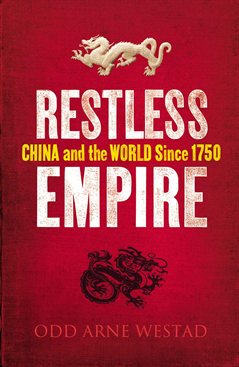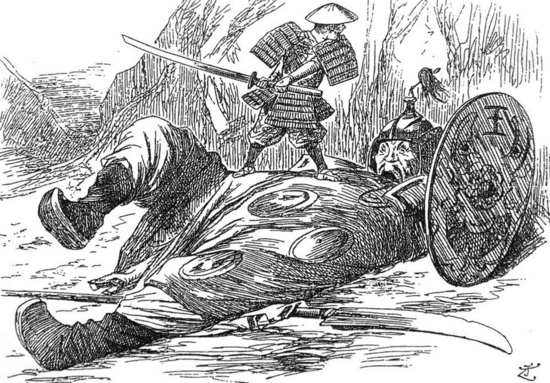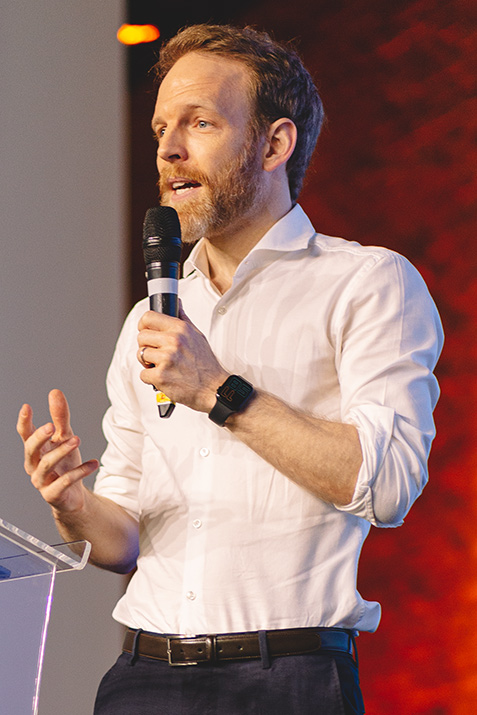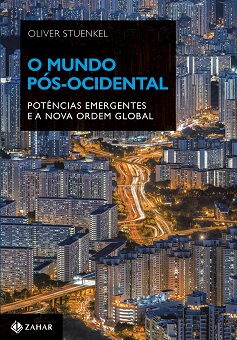
Book review: Restless Empire. China and the world since 1750. By Odd Arne Westad. Basic Books (2012), 528 pages. R$ 29,49 (ebook, www.amazon.com.br)
China and its society of both past and present, Odd Arne Westad argues in Restless Empire, are not as isolated from the rest of the world as most observers think. Quite to the contrary, China’s history, the author argues, is profoundly marked by constant engagement with the outside world, and precisely that interaction has been the defining element in the creation of modern China. As a Chinese scholar wrote during the discussions about which political system the country should adopt after the fall of the Qing, “No characteristic of Chinese intellectual life …. is more prominent than foreign influence.”
In his authoritative analysis, Westad describes the history of the relationship between China and the rest of the world, going beyond mere interstate relations. Indeed, the author emphasizes the role of non-state actors – missionaries, traders, reformers, scholars, foreign government advisers, adventurers and migrants – who are the main protagonists of his book.
Far from describing China’s history as that of an inward looking status-quo power, the author emphasizes the many expansionist wars that marked the country’s history. “The dramatic Qing penetration of Central Asia”, Westad writes, “is a story of intense conflict and, eventually, of genocide.” (Until today, policy makers in Beijing struggle to control this “new frontier”, Xinjiang, where the majority of the population is Muslim.) China also engaged the world in more peaceful ways. Over the past centuries, millions of Chinese have left the country in search of trade, adventure, or a better life for them. Since then, they continuously helped opening up Chinese society, by establishing international ties or by introducing new ideas and products. Westad writes that there is “no other country for which the diaspora and people in exile have played such a significant role in the reshaping of its fortunes.”
Chinese who studied abroad in the second half of the 19th century and the early 20th century were decisive in modernizing the country by occupying leadership positions upon their return. Key figures such as Zhou Enlai and Deng Xiaoping went to Europe as students, and were profoundly influenced by the experience. As late as 2002, a third of the members of China’s Politburo had studied in the Soviet Union.
He also shows how the foreign-leased areas of China in the 19th and 20th century contributed to creating modern China, “providing the spaces in which the hybridity and fluidity of contemporary Chinese society were born.” One of the book’s most interesting parts describes how Japan, more than any country, shaped the way China attempted to adapt to modernity. Despite the traumatic defeat against a quickly modernizing Meiji Japan in 1894, the first time Qing China ever lost a war, Chinese reformers continued to admire Japan. If Japan, also a Confucian society, could adopt new ideas successfully, they argued, so could China. Indeed, reformers often presented Western ideas as Japanese ones, which made it easier for Chinese conservatives, often profoundly anti-Western, to accept and implement them. Later, after World War I, anti-Japanese sentiment in China became a key element of Chinese nationalism, a potent domestic force until today. And yet, Japanese nationalism — and the racial concepts it included — served as a model for Chinese nationalists.

Satirical drawing in the magazine Punch (29.9.1894), showing the victory of “small” Japan over “large” China.
To foreign observers, Chinese society may seem utterly opaque and resistant to outside influence. Yet the changes China has undergone over the past decades are remarkable and very much a product of broad and multi-faceted dialogue with the rest of the world. Thousands of foreign advisers played a key role in modernizing China throughout the second half of the nineteenth and all of the twentieth century – from Europe, Japan, or, after World War II, from the Soviet Union. In several instances, foreigners occupied key positions – like heading the nation’s tax collection – showing a degree of openness unthinkable in the West. In the 1920s and 1930s, Eugene Chen, born in Trinidad in 1878, served as China’s foreign minister, although he spoke no Chinese.
Interestingly enough, Jean Monnet, who would later become one of the founders of the European Union, worked in China for several years in the 1930s, as chairman of the Chinese government’s committee to facilitate the availability of credit for companies that wanted to invest in China.
The impressive richness in detail, clear language and usefulness to make sense of today’s China turn Restless Empire into a must-read for China scholars. It powerfully undermines the myth that China has been and remains relatively isolated from the world. Foreign ideas will continue to shape the way China develops: Today, millions of Chinese students study at leading universities around the world, and many of those who return will occupy positions of influence. Indeed, the case of China suggests that, sending students abroad is perhaps one of the most useful investments a government can make to promote long-term development.
After Mao’s victory and the initial purge of anything foreign, the Communist Party began to heavily import ideas and concepts from the Soviet Union, in what was intended to become “the largest transfer of foreign knowledge into China ever”: “From city planning to agricultural reform, from cultural institutions to labor camps, from nationalities policies to foreign policy, the new socialist state that the CCP wanted to build was to be modeled on the Soviet experience.” Beijing and other major cities were refashioned in Soviet style. In return, Soviet aid to China became, in relative terms, history’s biggest foreign assistance program in human history, which included, as so often in Chinese history since the mid-19th century, foreign government advisers and scholarships for Chinese students in the USSR.
As China was engulfed in Mao’s madness of the Great Leap Forward and the Cultural Revolution, China briefly cut off all its ties with the rest of the world — described in detail in the chapter “China Alone.” Even Cuba, North Korea and North Vietnam openly criticized China, and the Soviet and East German embassies were besieged. Yet soon after Mao’s death, China would again eagerly study foreign ideas — this time, capitalism — and engage with the rest of the world in an unprecedented way. Westad calls the final decades of the 20th century “America’s decades in China”: US-American influence was everywhere: “in the economy, politics, arts, and consumer patterns.” After his visit to the United States in 1979, Deng told his colleagues that he could not sleep for several nights, thinking about how China might achieve such abundance. Today, China’s capitalism is indeed unlike the European and Japanese type, with their safety nets, but similar to that of the United States, with an emphasis on mobility, opportunity and personal responsibility.
Restless Empire raises many questions about the role China may play once it turns into the world’s greatest economy. China’s definitions of modernity have varied dramatically over the past two centuries, but except for a brief period, they were always strongly influenced by either Europe, Japan, the Soviet Union or the United States. Still, the author insists that China never fully copied foreign models, but always developed hybrid ones. “China”, he writes, “is on its way to developing distinct forms of modernity, connected to what has been happening elsewhere, but still separate, because it comes out of a very particular past.” That may be an important observation to keep in mind as we seek to predict China’s future role in global order.
Book review: “The Party: The Secret World of China’s Communist Rulers” by Richard McGregor
The Concubine Who Launched Modern China








